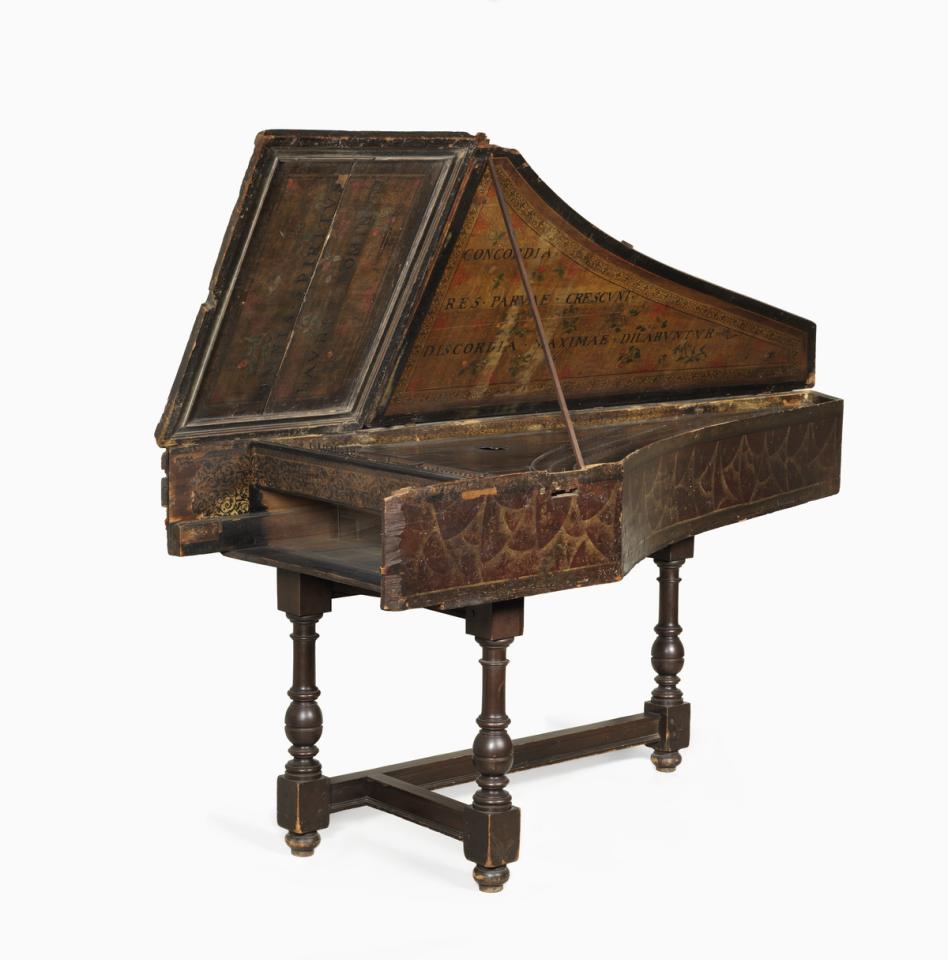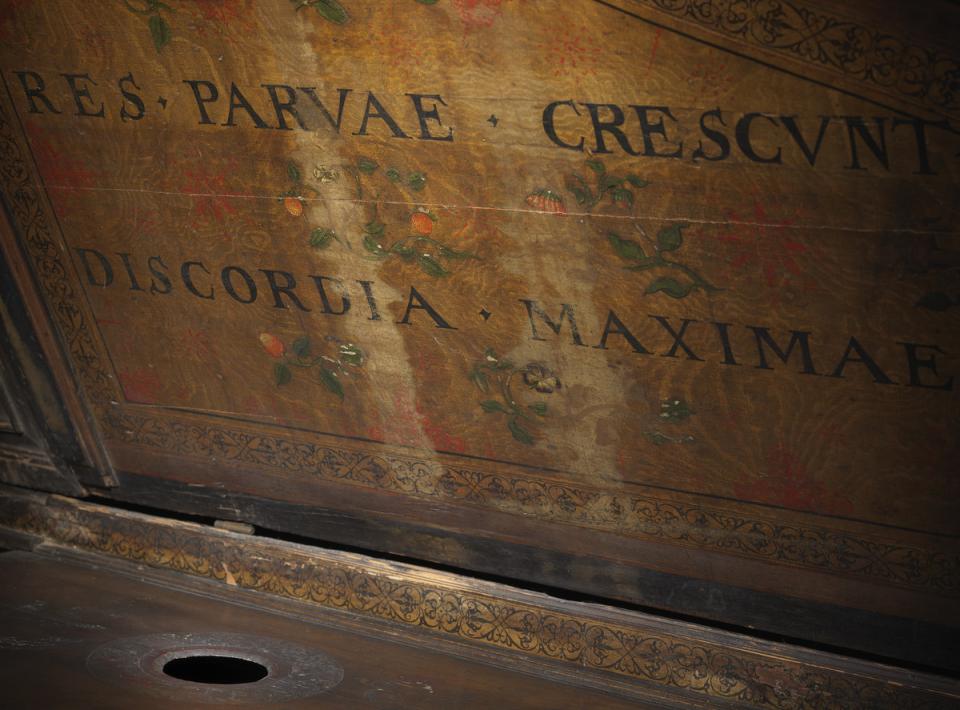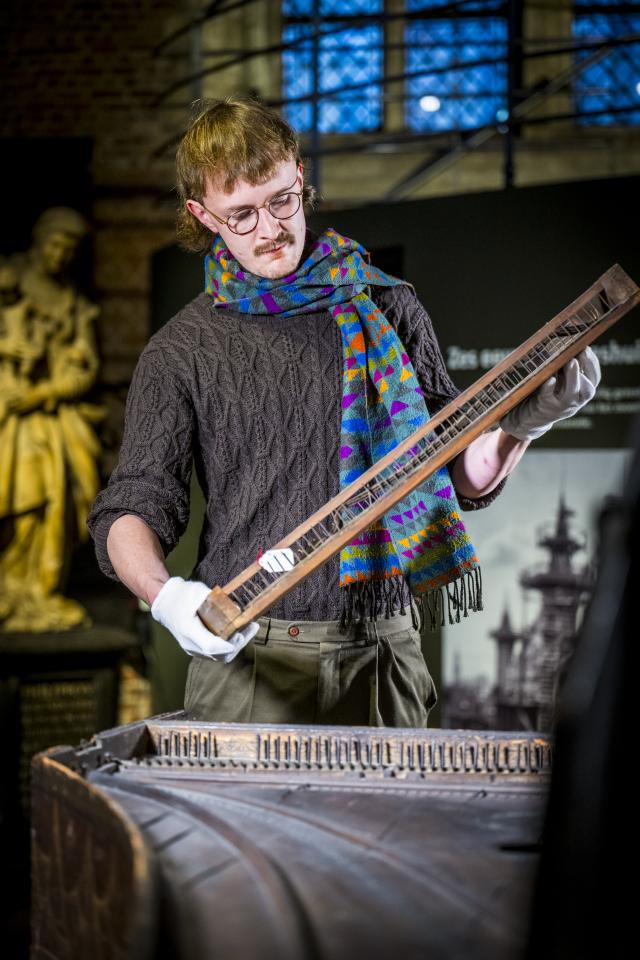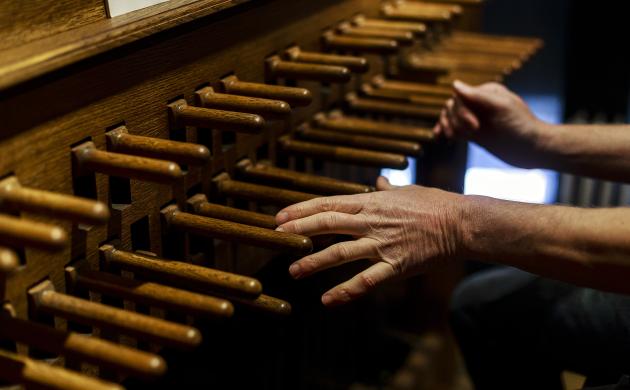Craftsmanship
One of the most unusual instruments in the Museum Vleeshuis' collection is a large harpsichord made by the renowned harpsichord maker Andreas Ruckers (Antwerp, 1579-1651/53) in 1615. In 2024, Museum Vleeshuis asked instrument maker Bas Neelen to build a new harpsichord for the collection, inspired by the Ruckers harpsichord from 1615. The new instrument will be made with historically accurate materials and techniques, in the spirit of harpsichord maker Andreas Ruckers.
Musical instrument making is central to the story of Museum Vleeshuis, and it is a domain where technical craftsmanship meets artistic expression. By collaborating with contemporary instrument makers, the museum keeps this musical craftsmanship from Flanders alive and relevant. The new harpsichord will not only have its place in the collection, but will also be used for concerts, lessons and workshops in the renovated museum.

Flemish masterpiece
The Andreas Ruckers harpsichord from 1615 was once used in Saint James' Church in Antwerp. It stood on the rood screen. A rood screen, or chevet, is a richly decorated wall that separates the choir from the rest of the church. In the 17th century, the rood screen was the most important place in the church where music was played. Musicians were in the middle, and slightly higher up, which improved acoustics. The Andreas Ruckers harpsichord was played during festive masses or at solemn funerals, as part of a larger ensemble.
Although harpsichords fell into disuse from the end of the 18th century, the Ruckers instrument was preserved in Saint James' Church. Around 1864, it eventually came into the city's museum collection. Today, the instrument is no longer playable.
This large harpsichord originally had two keyboards, but all but one of the keys disappeared during the 19th century. Moisture and pests have deteriorated the wood and decorations. Nevertheless, the instrument has remained relatively untouched: there have been few modifications or major restorations over the centuries. This exceptional authenticity explains why it was added to the Flemish Masterpiece List in 2013.

The instrument is one of the rare transposing harpsichords preserved in Flanders. It had two keyboards that were not connected to each other, differing in pitch by a quarter. This may be due to the musical practices at the time, where pitch was not fixed. With a so-called transposing harpsichord, the harpsichordist could then easily play along with all instruments in all keys.
In terms of both construction and decoration, the harpsichord from 1615 is a superb example of harpsichord making in Antwerp. The exterior is painted in a reddish-brown marble imitation, while the inside of the lid features large sheets of printed wood grain motif. At the top are Latin proverbs, including: "Omnis spiritus laudet Dominum" ("Let every spirit praise the Lord") and "Concordia res parvae crescunt, discordia maximae dilabuntur" ("Small matters thrive with concord, great things fall apart through discord").
If you look closely, you will discover delicate paintings of flowers and animals on the soundboard. Thanks to the dating on the soundboard, we know with certainty that this masterpiece was built in 1615.
 Foto: Frederik Beyens
Foto: Frederik Beyens
Foto: Frederik Beyens
The maker
Museum Vleeshuis entrusted the construction of the new harpsichord to Bas Neelen. He had previously built a harpsichord after an instrument in the collection of Museum Vleeshuis, namely an Andreas Ruckers harpsichord from 1644 - also a Flemish Masterpiece. Neelen used historical materials and techniques - without using machine tools, but with self-produced tools based on historical examples. You can listen to the result on the CD Antwerp Requiem ca.1650.
The ambition is to create a playable instrument which resembles the harpsichord that left Ruckers' studio in 1615 as much as possible. Museum Vleeshuis not only wants to reconstruct this extraordinary instrument, but also preserve the centuries-old knowledge and traditions of Antwerp harpsichord making - intangible heritage - for future generations. That is why Bas Neelen has carefully recorded his craftsmanship throughout the construction process. His documentation, along with his tools, sketches, designs and construction drawings, will subsequently be given a place in the collection of Museum Vleeshuis.
The construction project
The project started with a detailed examination of the original harpsichord. Bas Neelen got an idea of the current state of the harpsichord, and described in detail the materials and construction techniques used. In his work plan, he has noted what parts need to be completed or modified from the original, and what durable materials he will use in building the new instrument. He has also set out a general vision of interpreting and reconstructing the Ruckers instrument, and what it means to build in the spirit of a world-renowned Antwerp harpsichord maker.
After examining the harpsichord, Neelen produced a construction drawing of the original instrument. The construction of the new instrument has also been extensively documented in close consultation with the museum. Finally, the new harpsichord will be decorated in line with the historical instrument, executed with the same techniques and materials as at the time.
Thanks to this project, Museum Vleeshuis is not only bringing to life a Masterpiece, but also keeping a centuries-old tradition alive for future generations.




